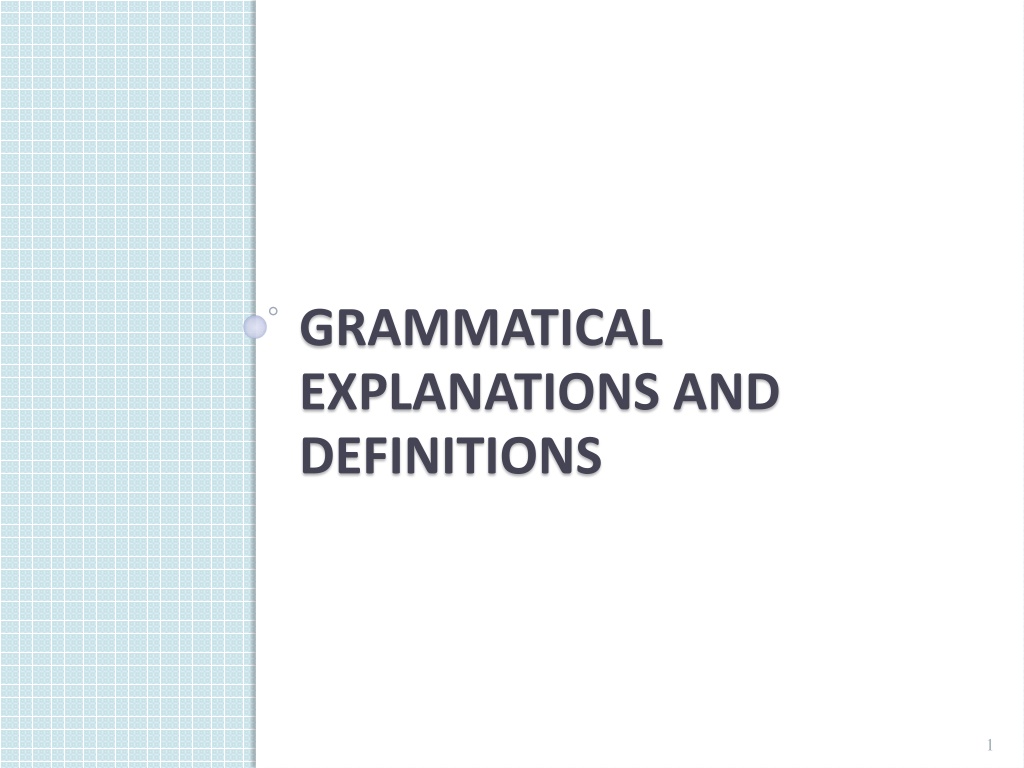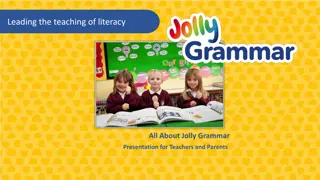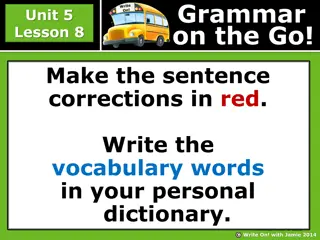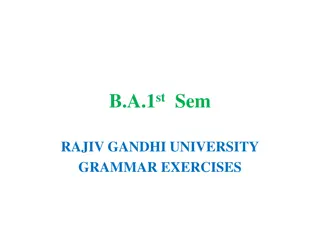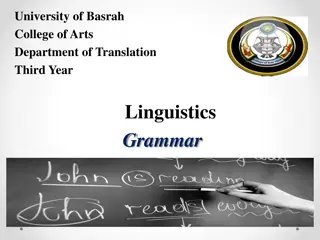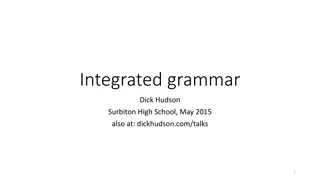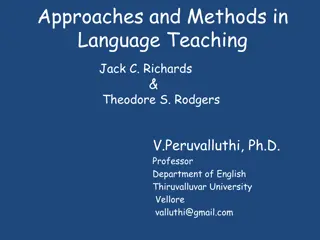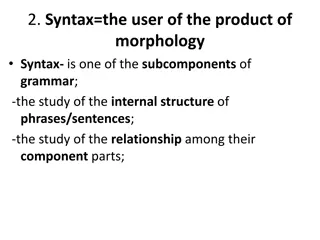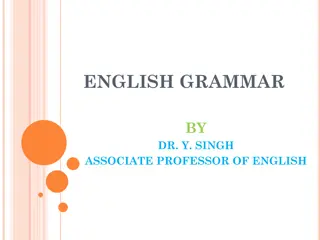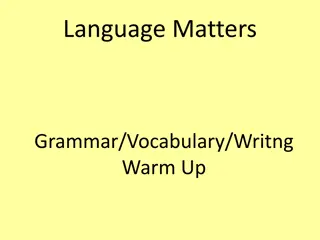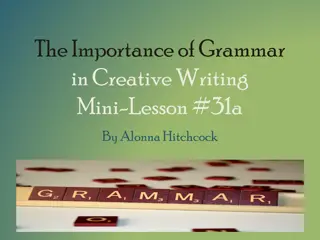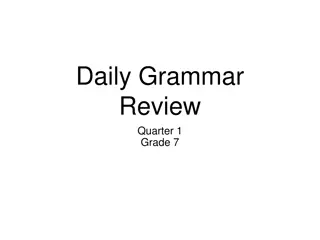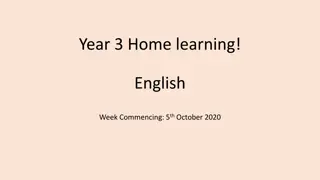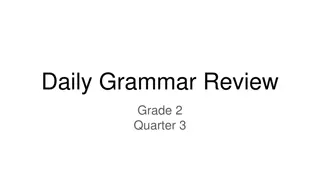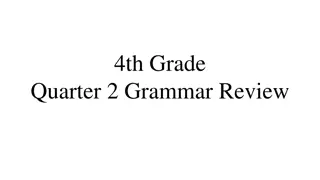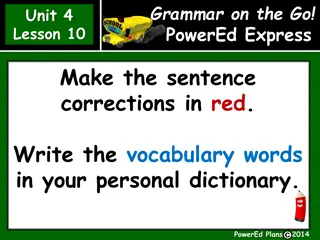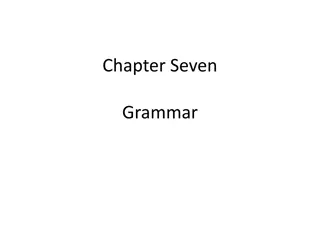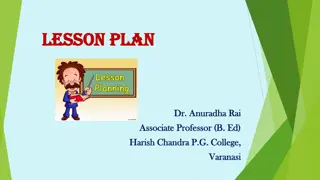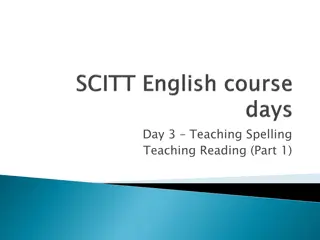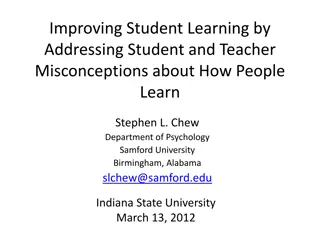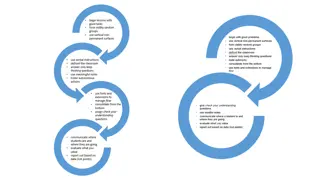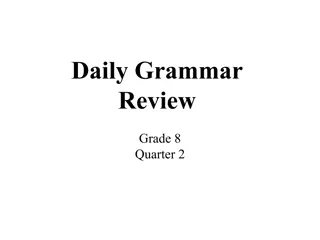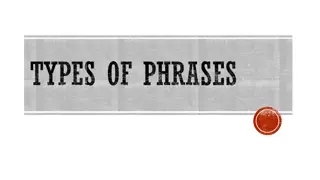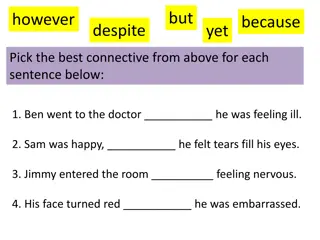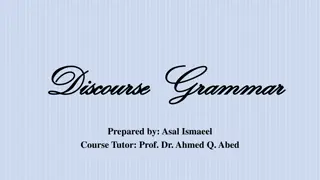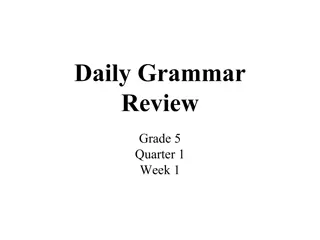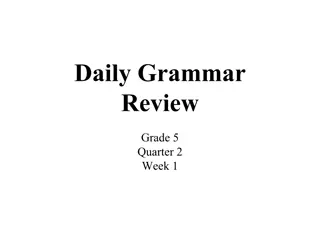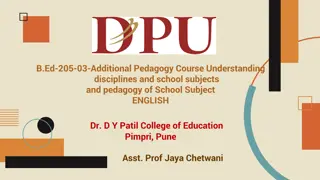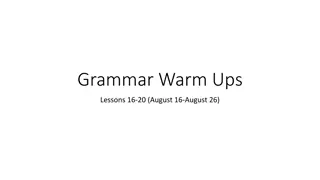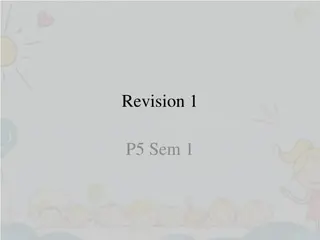Effective Strategies for Teaching Grammar Concepts
Discussing the challenges with traditional definitions in teaching grammar, the importance of fostering critical conversations, and offering alternative approaches to explaining grammar concepts to students.
Download Presentation

Please find below an Image/Link to download the presentation.
The content on the website is provided AS IS for your information and personal use only. It may not be sold, licensed, or shared on other websites without obtaining consent from the author. Download presentation by click this link. If you encounter any issues during the download, it is possible that the publisher has removed the file from their server.
E N D
Presentation Transcript
GRAMMATICAL EXPLANATIONS AND DEFINITIONS 1
A Key Teaching Principle Discussion is fundamental in encouraging critical conversations about language and effects. Talk to: generate ideas and vocabulary explain authors language choices explain own language choices collaborate in writing tasks build conceptual understanding 2
Problems with Definitions Two different problems: 1. Grammatical definitions from grammar books are often complicated, very abstract, and use other grammatical terms to explain one term A noun phrase is a phrase with a noun as its head. A phrase is a group of words that are grammatically connected so that they stay together, and that expand a single word, called the head . The phrase is a noun phrase if its head is a noun. (from the Grammar Glossary) 2. Everyday definitions are easier to understand but they mislead children and ultimately create confusion An adjective is a describing word Yes, sometimes, but verbs, adverbs and nouns also have a descriptive function An example: Look at Michael Morpurgo s description of the sword Excalibur (in Arthur, High King of Britain). There are no adjectives used to describe the sword; descriptive detail is created through the choice of proper noun; through an adverbial phrase and through subordinate clauses: That is Excalibur. It comes from the half-world of Avalon, the blade forged by elf-kind, the scabbard woven by the Lady Nemue herself, the Lady of the Lake, and my lady too. 3
Everyday Definitions to Avoid? An adjective is a describing word But so are nouns, verbs and adverbs and syntactical structures A verb is a doing word But the most common verbs in English are be and have A noun is something you can see and touch But lots of nouns aren t: wind; game; element A compound sentence is two simple sentences joined by a conjunction. But there are other patterns of co-ordination : I danced, sang and drank late into the night. About a main clause: it makes sense on its own and a subordinate clause it doesn t make sense on its own Almost everything makes sense on its own: bananas; red tape; jumping. An adverb ends in ly But many adverbs don t: later; meanwhile; soon; now , and adjectives can end in ly : lonely; lovely; chilly; friendly 4
Fine so none of those definitions that we use are any good. So how do we explain grammar to our students? 5
Better Definitions? An adjective gives us more information about a noun Lots of prepositions tell us about place, where things are One group of adverbs end with ly and these are all made by adding ly to an adjective Nouns name people, places, ideas and feelings (but they don t name actions because verbs do that) But with some aspects of grammar, such as verbs, it might be easier to avoid definitions altogether and build knowledge cumulatively eg Make sure all students know that be, am, is, are, was, being, been and have , has, had, having are always verbs Over time, add do, got and modal verbs to this list Then introduce verbs that convey actions: jump; sing; eat; walk etc Over time, add verbs that are less obviously doing : think; dream; believe etc Understanding clauses is heavily reliant on understanding verbs and verb phrases 6
The Potential of Examples We learn naturally through seeing things in context: most of our vocabulary is learned by encountering new words in our reading and we don t look up their definitions we learn by repeatedly meeting that word in different contexts. Repeatedly seeing grammatical constructions and repeatedly hearing the teacher use the correct terminology may help embed grammatical understanding more effectively than definitions. Try showing the relationships through examples, rather than definitions eg Cobwebs shivered in a shaft of moonlight piercing the gloom. Look at the four nouns here cobwebs, shaft, moonlight and gloom. They are creating a visual description or picture of the crypt. What images do they create for you of the crypt? Look at that very descriptive noun phrase: a shaft of moonlight piercing the gloom. Can you see that picture in your mind s eye? Could you paint it? Look at the two verbs shivered, piercing. Is this a nice place to be? Why do you think the author has chosen those verbs? How might she want to make us feel? 7
